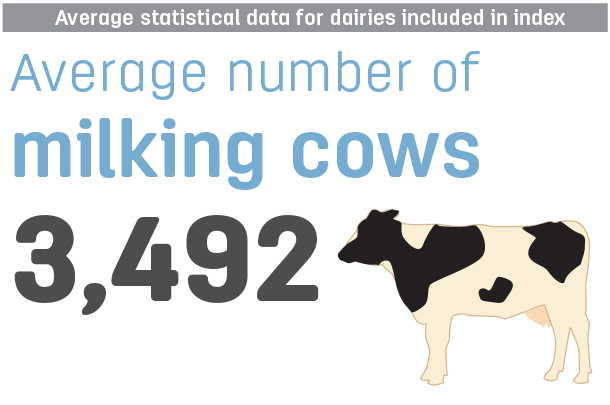Our firm has produced averages of our dairy clients’ profit and loss reports on a quarterly basis for quite some time. Our clients, as well as others in the industry, have found these very helpful as benchmarks to which to compare their own operations.
The only shortcoming to these reports was the delay in issuance necessary to compile figures from all of our clients.
In response to this issue, we have created the National Dairy Advanced Index in order to provide more timely numbers regarding the current financial conditions facing the dairy industry. The index figures will be available within 75 days after the end of the quarter and will highlight trends in the major income and expense categories.
Click here or on the image above to view at full size in a new window.
As much as conditions allow, the same dairies will be included in the index to maximize comparability between time periods. We will also continue to prepare our traditional industry averages, including reports based on geographical areas, which will be available at a later date.
Our first-quarter 2018 index includes 45 dairies from 13 states. The dairies in the index have an average of approximately 3,490 milking cows and average daily production of 77 pounds per cow.
Some key points from the first-quarter 2018 index:
- Average milk price came in at $15.11 per hundredweight (cwt), a decrease of $1.35 per cwt from 2017.
- Feed costs increased 15 cents to $8.53 per cwt. Most dairies saw a modest increase in their feed costs this quarter compared to year-end 2017.
- Labor costs have been rising and settled at $1.64 per cwt. Many states raised the minimum wage in 2017, and some of those increases were substantial. A labor shortage has also been felt in many parts of the country, which has led to a bidding war for employees.
- The index shows an average net loss from operations of 67 cents per cwt or approximately $160,000 per herd for the three months ending March 31.
Many of our clients are definitely feeling financial constraints. They are short on liquidity, and the balances on their lines of credit may be creeping up toward their limits.
To understand the bigger picture, it’s important to remember what is not included in net income: debt service. Also, loan principal repayment is not considered an expense but is a significant cash outflow.
- Personal expenses/draws – Although these are not business expenses, they are just as necessary.
Looking at the balance of 2018, we see rising milk prices being partially offset by rising employment and interest costs.
If you have any comments on the index, please contact us by phone, email us Genske Mulder & Company LLP or through our website (Genske Mulder & Company LLP).








